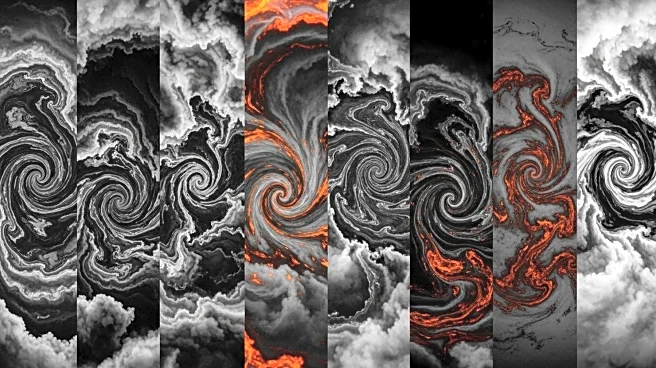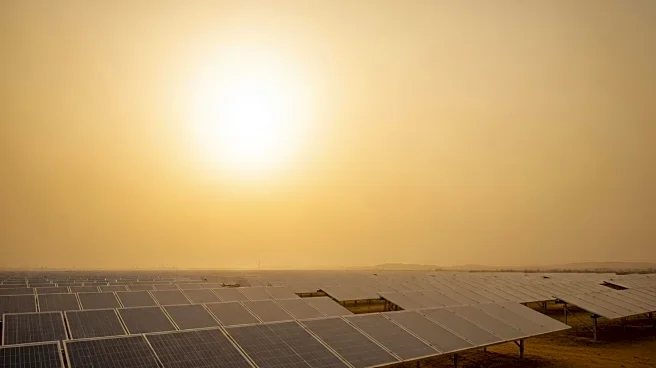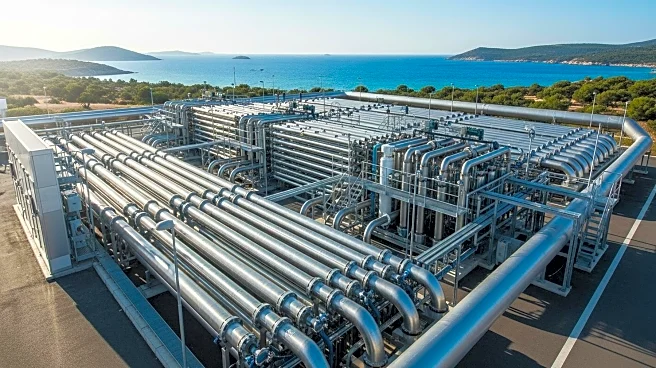What's Happening?
A study utilizing data from the Earth Polychromatic Imaging Camera (EPIC) on the Deep Space Climate Observatory (DSCOVR) has documented a decade of aerosol observations, highlighting a rise in carbonaceous
aerosols from wildfires. These observations, made using near-UV measurements, show an increase in atmospheric carbonaceous aerosol load, particularly from wildfires in the northern hemisphere. Unlike aerosols from tropical biomass burning, these particulates ascend to higher atmospheric levels, sometimes reaching the lower stratosphere, where they persist longer. The study covers global events, including wildfires and dust storms, observed from various regions worldwide.
Why It's Important?
The findings underscore the growing impact of wildfires on atmospheric composition and climate. The persistence of carbonaceous aerosols at higher altitudes can affect climate patterns and air quality, posing challenges for environmental policy and public health. Understanding these dynamics is crucial for developing strategies to mitigate wildfire effects and manage air quality. The integration of satellite data from multiple sources enhances the ability to monitor and respond to these environmental changes, supporting global efforts to address climate-related challenges.
What's Next?
Continued monitoring and analysis of aerosol data are essential to track changes in atmospheric composition and assess their implications. Researchers may focus on refining models to predict aerosol behavior and its impact on climate. Collaboration between scientific institutions and policymakers could lead to improved strategies for wildfire management and air quality control. Public awareness campaigns may be necessary to inform communities about the health risks associated with increased aerosol levels.
Beyond the Headlines
The study highlights the importance of satellite technology in environmental monitoring, showcasing its role in understanding complex atmospheric processes. It raises ethical considerations regarding the responsibility to address human-induced environmental changes and the need for international cooperation in climate action. The findings may prompt discussions on sustainable practices and the balance between development and environmental preservation.












